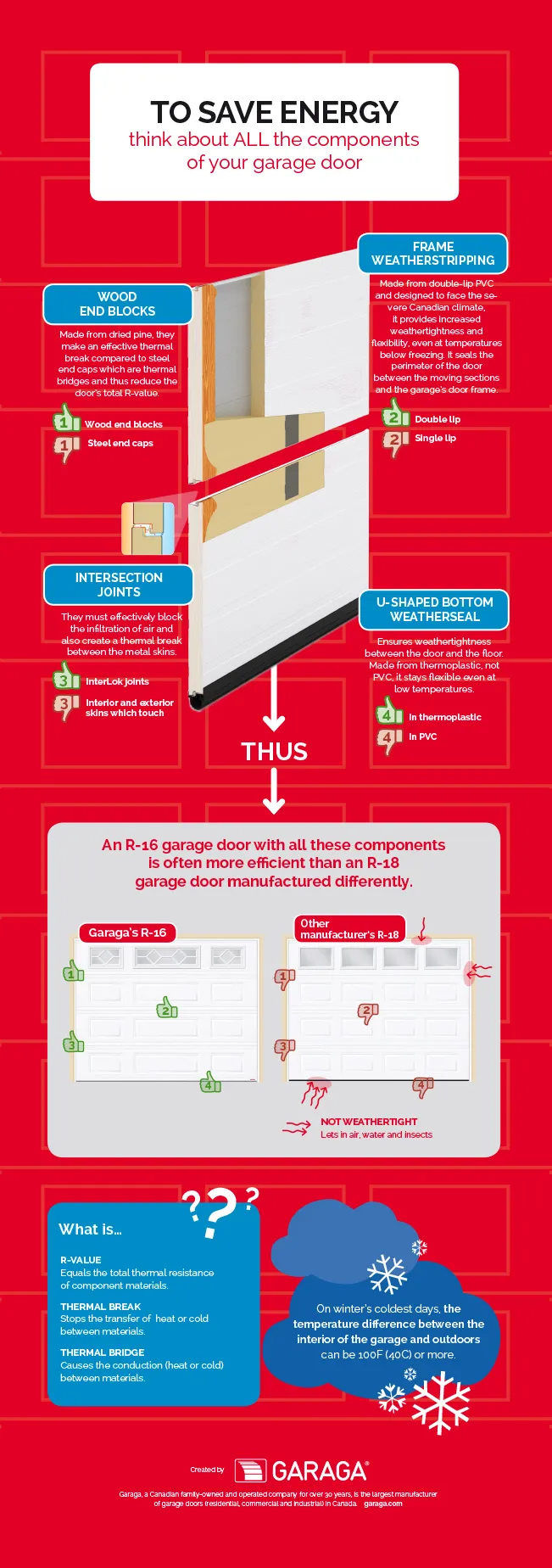A major component of an energy efficient garage is a well-insulated garage door. But are all insulated garage doors the same? Definitely not! The thermal resistance factor, R-value, of a door means little if the door isn’t equipped with effective thermal breaks and appropriate weather seals around the perimeter and between the sections of the door. Without these weatherproofing features, cold and heat can reduce the energy efficiency of the door.
Wood end blocks for sections
- The section ends are the part that links the exterior metal sheet of each section of the door to that of the interior. To hold it all in place, there is weatherstripping or a joint in glue linking the two pieces of sheet metal.
- Many garage door manufacturers produce lengths of sections that they then cut to obtain the desired door width. To close the section ends, they install steel end caps.
- Garaga, on the other hand, uses a different manufacturing technique where each section is made one at a time. Wood end blocks are used to avoid thermal bridges. These wood end blocks do not conduct cold toward the interior, as steel end caps do.
Joints between sections
- Another thing to examine closely is the joints between sections. To attach the exterior sheet metal to the interior one, some manufacturers use nothing but a metal staple, with or without glue.
- Garaga uses PVC weatherstripping equipped with a triple-contact thermal break. The exterior sheet of metal doesn’t come in contact with that of the interior and thus the cold is not conducted toward the garage’s interior.
Perimeter frame weatherstripping
- Most manufacturers provide PVC weatherstripping that doesn’t measure up when placed for 48 hours in a freezer. It becomes very rigid and loses all flexibility.
- Garaga uses a higher quality PVC with a double-lip seal that remains flexible down to -15˚ F (-25˚ C).
U-shaped bottom weatherstripping
- Just like frame weatherstripping, the quality of bottom weatherstripping is measured by its flexibility during cold weather.
- Garaga uses weatherstripping made from thermoplastic elastomer (and not PVC) that stays flexible even down to -52˚ F (-62˚ C).
What should we take away from all of this?
- When garage door energy efficiency for a residential or commercial building is evaluated, how the garage door is constructed must be carefully examined. Garage door insulation is important but by far not the only factor to consider.
- Even if different garage doors have the same R insulation value, they are not necessarily equivalent. The R value doesn’t take into account the heat loss (of energy) from joints between the door sections, from each section’s weatherstripping, as well as that at the exterior perimeter of the door.
Contact a true garage door specialist in your area. They know garage doors better than anyone else. They will be able to advise you and present the best possibilities based on your needs, even these requirements are very specific.


Add new comment